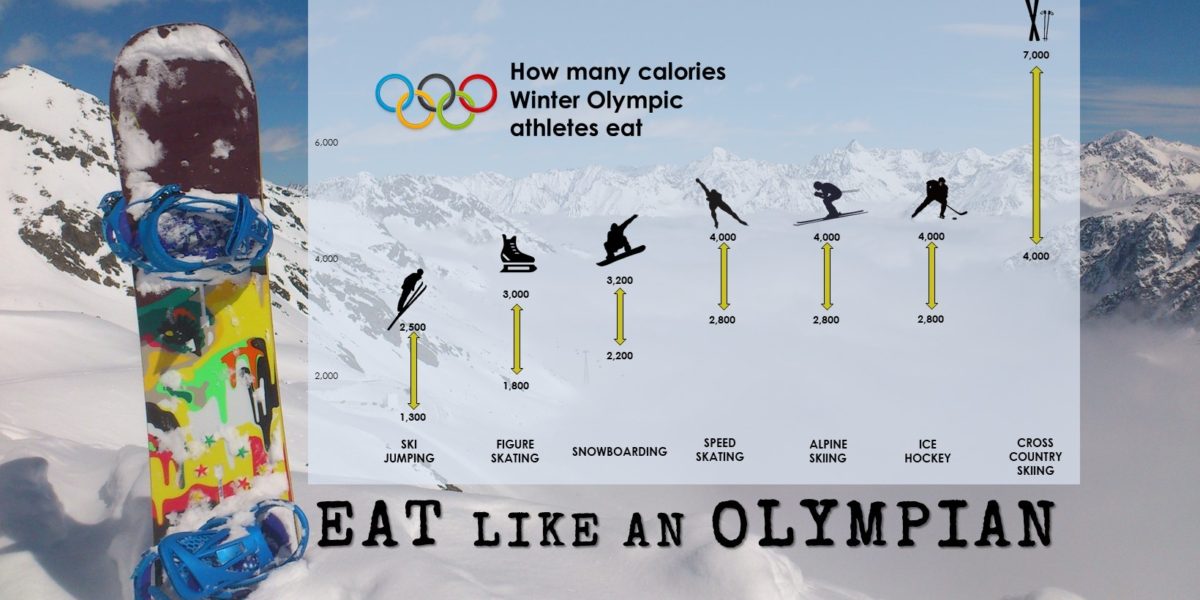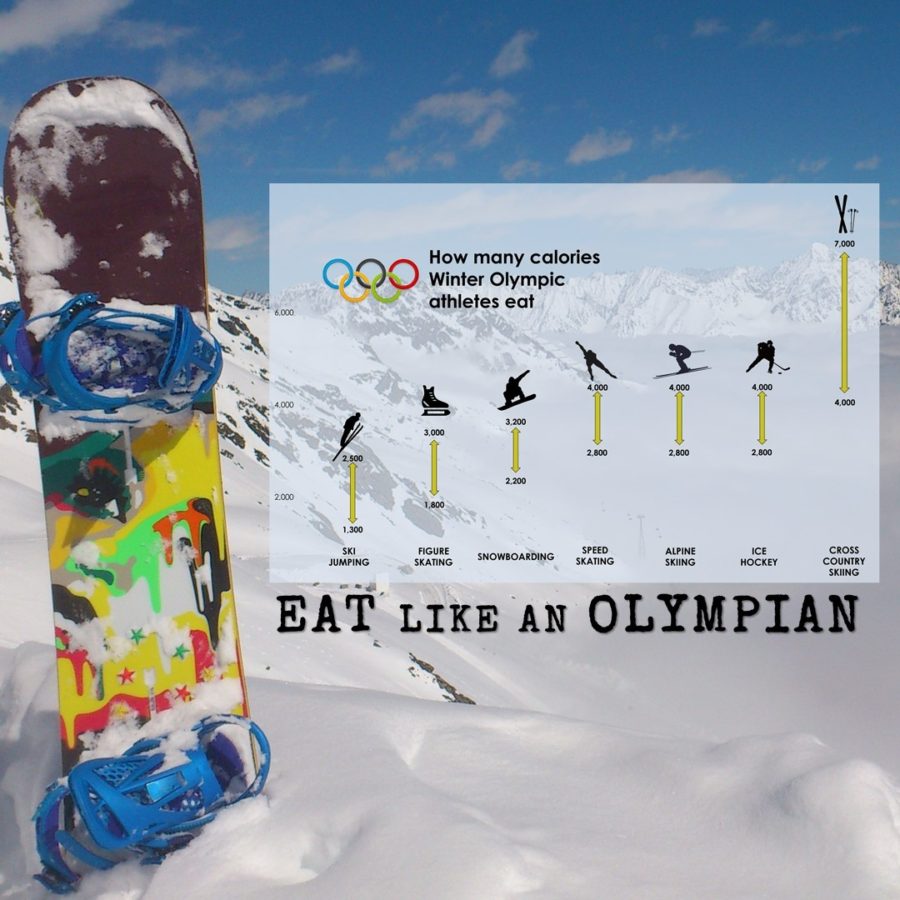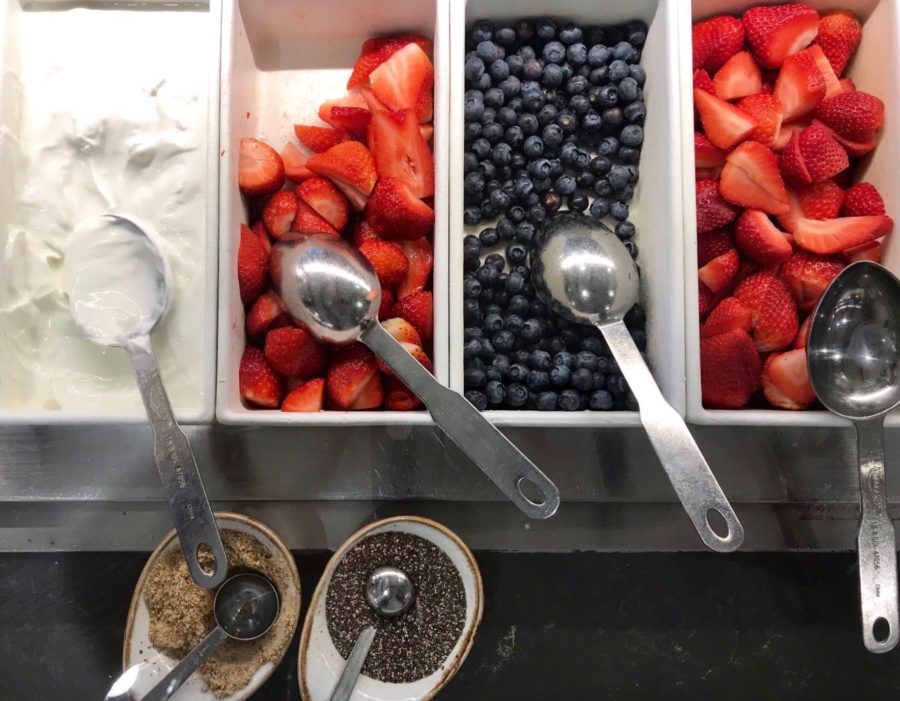
Eat like an Olympian
Olympic athletes have different energy needs than everyday athletes because they are training and exercising multiple times throughout the day, every day. While their exact diets and exercise regimes may be extreme, there are many things to learn from their diets and lifestyles.
Eat like an Olympian
For Winter Olympians, the number of calories consumed is very dependent on the individual and their sport. For events like Ski Jump or Figure Skating, athletes want to stay lean and light to help with aerodynamics. Daily calorie intake is typically between 1,500 to 3,000. For sports where the energy expenditure is higher like Cross-Country Skiing, athletes are consuming around 4,000 to 7,000 calories a day.
Clearly, Olympians eat a lot in a day! The solution seems easy; we live in a high-calorie, indulgent modern America. However, most professional athletes eat a balanced diet, inclusive of all food groups. Meals focus on healthy, simple and complex carbohydrates and lean protein. Healthy fat sources are essential in helping Olympians meet their calorie goals while supplying lasting energy.

Fueling the Everyday Athlete
While balancing macronutrients (protein, fat, carbs, water) is a good habit for all meals and snacks, the combination and amounts will vary depending on timing.
It’s a good idea to eat a high-carbohydrate, moderate protein meal several hours before a workout. Your body can use protein and fat for energy, but carbohydrates are more efficient and the body’s preferred source of fuel. A carbohydrate-based snack within 30-60 minutes of hitting the gym is also a good idea for some extra energy. For your pre-workout meal and snack, it’s best to choose simple, low fiber, easily digestible carbs to prevent an upset stomach during your sweat session.
Fuel with these meals:
- Turkey and cheese sandwich + apple + low fat chocolate milk
- Peanut butter and jelly + banana + low fat milk
- Low fat Greek yogurt + berries + small salad with chicken
Fuel with these snacks:
- Piece of fruit or applesauce
- Fruit snacks
- Small granola bar
- Pretzels or graham crackers

The Three R’s of Recovery
Refuel: Your muscles store carbohydrates in the form of glycogen. During an intense workout, you’ll likely dip into your glycogen stores. It’s important to replenish these stores, so after a workout you can shift your intake to complex, fiber-rich, carbohydrate sources.
Repair: Protein helps to rebuild broken-down muscles. Consuming about 20-30 grams of protein post-workout can also help to reduce inflammation.
Your body’s ability to replenish and rebuild is at its peak in the hour after training, so aim to consume carbohydrates and protein just after training.
Refuel and repair with these snacks and meals:
- Low fat chocolate milk + handful of almonds
- Cottage cheese + pineapple + sprinkle of shredded coconut
- String cheese + sliced apple + handful of pretzels + peanut butter
- Scrambled eggs + cheese + wheat wrap + yogurt + berries
- Stir-fried chicken + veggies + brown rice
Rehydrate: Hydration is crucial! Staying hydrated increases energy, improves movement, improves recovery and agility, regulates body temperature, and aids in mental clarity. During and after most workouts, water is enough, but if your face feels slightly gritty or salty, that’s a good indication you may want to replenish your electrolytes.
While you’re watching the Olympics this February, remember the effort it took for them to get there. From their intense training schedules to eating thousands of calories a day, being an Olympian is hard work. Get inspired to get active and eat like an Olympian while fueling your everyday workouts!